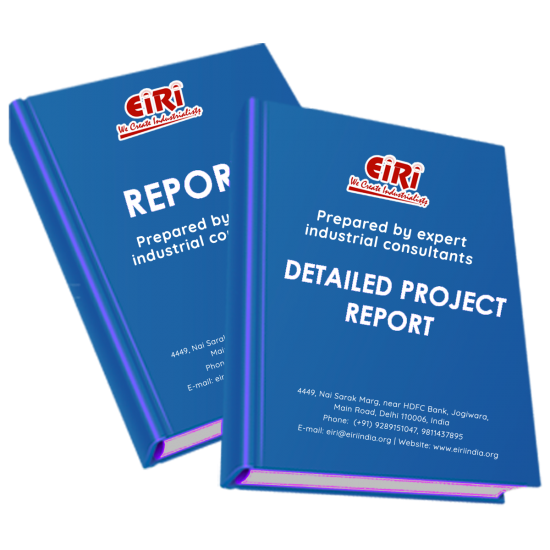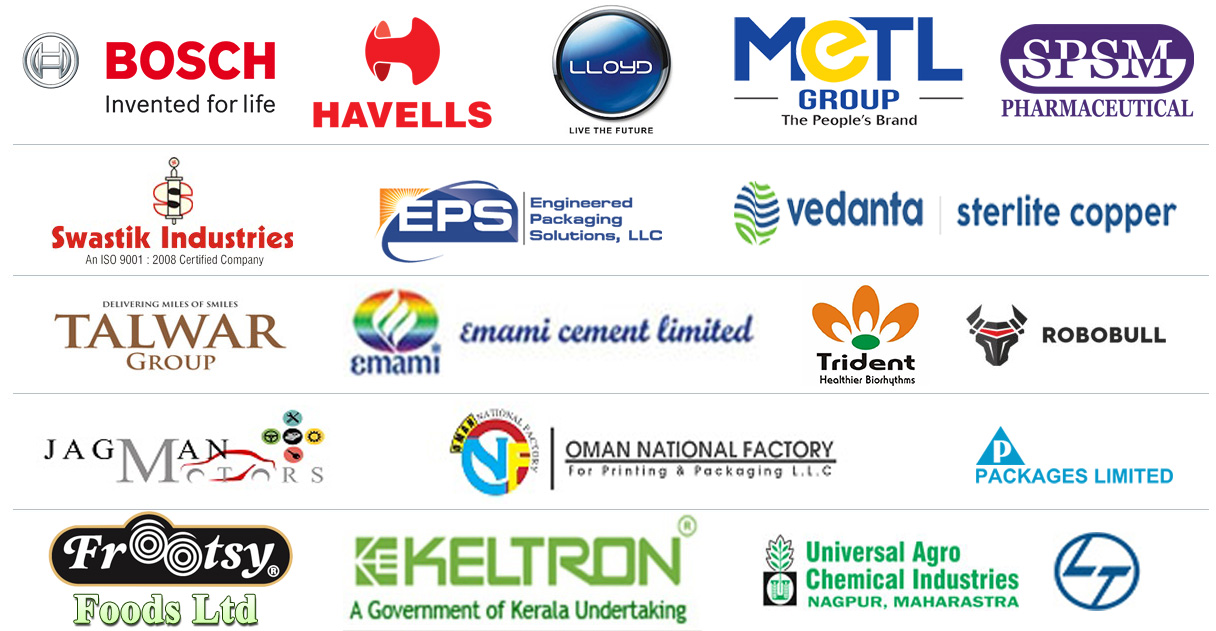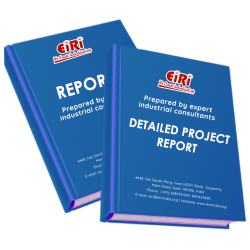Detailed Project Report on Sodium Hypochlorite Solution (12.5%)

- More than 40 years of experience
- Managed by expert industrial consultants
- ISO 9001-2015 Certified
- Registered under MSME, UAM No: DL01E0012000
- 24/5 Research Support
Get your quesries resolved from an industry expert. Ask your queries before report or book purchase. - Custom Research Service
Speak to the our consultant to design an exclusive study to serve your research needs. - Quality Assurance
All reports are prepared by highly qualified consultants & verified by a panel of experts. - Information Security
Your personal & confidential information is safe & secure.
SODIUM HYPOCHLORITE SOLUTION (12.5%)
[EIRI/EDPR/4349] J.C.: 2534XL
INTRODUCTION
Sodium hypochlorite (NaOCl) is a solution made from reacting chlorine with a sodium hydroxide solution. Sodium hypochlorite, commonly referred to as bleach, has a variety of uses and is an excellent disinfectant/antimicrobial agent.
Sodium hypochlorite is available as a solution in concentrations of 5 to 15% chlorine. Sodium hypochlorite is easier to handle than chlorine gas or calcium hypochlorite. It is, however, extremely corrosive and should be kept away from equipment that could be damaged by corrosion. Hypochlorite solutions decompose and should not be stored for more than 1 month and must be stored in a cool, dark, dry area.
Sodium hypochlorite is most often encountered as a pale greenish-yellow dilute solution referred to as liquid bleach, which is a household chemical widely used as a disinfectant or a bleaching agent. In solution, the compound is unstable and easily decomposes, liberating chlorine, which is the active principle of such products. Sodium hypochlorite is the oldest and still most important chlorine-based bleach.
It is intended to prepare a Feasibility Report to install 12000 MT/Year Sodium Hypochlorite (12.5%) solution production facilities as a Green Field Project.
2. Uses /Applications
• Sodium hypochlorite is used on a large scale in agriculture, chemical industries, paint- and lime industries, food industries, glass industries, paper industries, pharmaceutical industries, synthetics industries and waste disposal industries.
• In the textile industry sodium hypochlorite is used to bleach textile.
• It is sometimes added to industrial waste water. This is done to reduce odors.
• Hypochlorite neutralizes sulphur hydrogen gas (SH) and ammonia (NH3).
• It is also used to detoxify cyanide baths in metal industries.
• Hypochlorite can be used to prevent algae and shellfish growth in cooling towers.
• In water treatment, hypochlorite is used to disinfect water.
• In households, hypochlorite is used frequently for the purification and disinfection of the house.
Bleaching
Household bleach is, in general, a solution containing 3–8% sodium hypochlorite, by weight, and 0.01–0.05% sodium hydroxide; the sodium hydroxide is used to slow the decomposition of sodium hypochlorite into sodium chloride and sodium chlorate.
Cleaning
Sodium hypochlorite has destaining properties. Among other applications, it can be used to remove mold stains, dental stains caused by fluorosis, and stains on crockery, especially those caused by the tannins in tea. It has also been used in laundry detergents and as a surface cleaner. It is also used in sodium hypochlorite washes.
Its bleaching, cleaning, deodorizing and caustic effects are due to oxidation and hydrolysis (saponification). Organic dirt exposed to hypochlorite becomes water-soluble and non-volatile, which reduces its odor and facilitates its removal.
Disinfection
Sodium hypochlorite in solution exhibits broad spectrum anti-microbial activity and is widely used in healthcare facilities in a variety of settings. It is usually diluted in water depending on its intended use. "Strong chlorine solution" is a 0.5% solution of hypochlorite used for disinfecting areas contaminated with body fluids, including large blood spills (the area is first cleaned with detergent before being disinfected).It may be made by diluting household bleach as appropriate (normally 1 part bleach to 9 parts water). "Weak chlorine solution" is a 0.05% solution of hypochlorite used for washing hands, but is normally prepared with calcium hypochlorite granules.
Deodorizing
Sodium hypochlorite has deodorizing properties, which go hand in hand with its cleaning properties.
Waste Water Treatment
Sodium hypochlorite solutions have been used to treat dilute cyanide waste water, such as electroplating wastes. In batch treatment operations, sodium hypochlorite has been used to treat more concentrated cyanide wastes, such as silver cyanide plating solutions.
Sodium hypochlorite is commonly used as a biocide in industrial applications to control slime and bacteria formation in water systems used at power plants, pulp and paper mills, etc., in solutions typically of 10–15% by weight.
Endodontics
Sodium hypochlorite is the medicament of choice due to its efficacy against pathogenic organisms and pulp digestion in endodontic therapy. Its concentration for use varies from 0.5% to 5.25%. At low concentrations it dissolves mainly necrotic tissue; at higher concentrations it also dissolves vital tissue and additional bacterial species.
Nerve Agent Neutralization
50% sodium hypochlorite is used to neutralize any accidental releases of nerve agent in the toxic areas. Lesser concentrations of sodium hypochlorite are used in similar fashion in the Pollution Abatement System to ensure that no nerve agent is released in furnace flue gas.
COST ESTIMATION
Plant Capacity 40 MT/Day
Land & Building (2675 sq.mt.) Rs. 3.20 Cr
Plant & Machinery Rs. 3.02 Cr
Working Capital for 1 Month Rs. 98.15 Lac
Total Capital Investment Rs. 7.60 Cr
Rate of Return 45%
Break Even Point 51%
CONTENTS
INTRODUCTION
USES/APPLICATIONS
BLEACHING
CLEANING
DISINFECTION
DEODORIZING
WASTE WATER TREATMENT
ENDODONTICS
NERVE AGENT NEUTRALIZATION
REDUCTION OF SKIN DAMAGE
ADVANTAGES AND DISADVANTAGES OF SODIUM HYPOCHLORITE USE
ADVANTAGES
SODIUM HYPOCHLORITE AS A DISINFECTANT HAS THE FOLLOWING ADVANTAGES:
DISADVANTAGES
MARKET OVERVIEW
SODIUM HYPOCHLORITE MARKET, BY APPLICATION
SODIUM HYPOCHLORITE MARKET, BY REGION
REGIONAL INSIGHTS
KEY COMPANIES & MARKET SHARE INSIGHTS
SOME OF THE PROMINENT PLAYERS IN THE SODIUM HYPOCHLORITE MARKET INCLUDE
PROPERTIES
THE REQUIREMENTS FOR SODIUM HYPOCHLORITE SOLUTION ARE AS UNDER:
IMPORTANCE OF DENSITY
BLEACH STABILITY AND DENSITY AT 21ºC (70ºF)
CHARACTERISTICS
BIS SPECIFICATION
FORMULATION
RAW MATERIALS
CHLORINE GAS
RAW MATERIAL SUPPLIERS
MANUFACTURING PROCESS STEPS
PROCESS FLOW
PRODUCT STORAGE REQUIREMENT (TYPICAL)
TANK
VENTING
OVERFLOWS
STORAGE TANK IDENTIFICATION
CLEANING
INSPECTION
ENGINEERING DESIGN CONSIDERATIONS
ETP FACILITY
SEWAGE AND WASTE WATER EFFLUENT
UTILITIES REQUIREMENT (ESTIMATED-MONTH)
WASTE GENERATION & MANAGEMENT/GREEN BELT
GREEN BELT
WATER (ESTIMATED)
WASTE (ESTIMATED)
FLUE GAS (ESTIMATED)
PLANT & MACHINERY
SUPPLIERS OF PLANT & MACHINERY/TURNKEY SUPPLIERS
EOT CRANES
D.G. SETS
POWER TRANSFORMERS
COOLING TOWER
ETP PLANTS
AIR POLLUTION CONTROL EQUIPMENTS
AIR CONDITIONING EQUIPMENTS
AIR COMPRESSOR
PLATEFORM WEIGHING MACHINE
MATERIAL HANDLING EQUIPMENTS
FIRE FIGHTING EQUIPMENTS
ELECTRICAL MEASURING INSTRUMENTS
SUBMERSIBLE WATER PUMP
INSTRUMENTATION & PROCESS CONTROL EQUIPMENTS
PRELIMINARY LAYOUT
PRINCIPLES OF PLANT LAYOUT
MAJOR PROVISIONS IN ROAD PLANNING FOR MULTIPURPOSE SERVICE ARE:
PLANT LOCATION FACTORS
PRIMARY FACTORS
RAW-MATERIAL SUPPLY:
MARKETS:
POWER AND FUEL SUPPLY:
WATER SUPPLY:
CLIMATE:
TRANSPORTATION:
WASTE DISPOSAL:
LABOR:
REGULATORY LAWS:
TAXES:
SITE CHARACTERISTICS:
COMMUNITY FACTORS:
FLOOD AND FIRE CONTROL:
HEALTH SAFETY AND ENVIRONMENT
ANTICIPATED ENVIRONMENTAL IMPACTS
CONSTRUCTION PHASE
OPERATION PHASE
MITIGATION MEASURES (PROPOSED)
HSE REQUIREMENT
SAFETY & OCCUPATIONAL MEASURE
(STORAGE/HANDLING OF RAW MATERIAL & PRODUCT)
ENVIRONMENTAL/SAFETY LIABILITY AND ENVIRONMENT CLEARANCE PROCESS
POTENTIAL RISKS
PROPOSED IMPLEMENTATION SCHEDULE
PROJECT FINANCIALS
BASIS & PRESUMPTIONS (FOR PROFITABILITY WORKINGS)
APPENDIX – A:
01. PLANT ECONOMICS
02. LAND & BUILDING
03. PLANT AND MACHINERY
04. OTHER FIXED ASSESTS
05. FIXED CAPITAL
06. RAW MATERIAL
07. SALARY AND WAGES
08. UTILITIES AND OVERHEADS
09. TOTAL WORKING CAPITAL
10. TOTAL CAPITAL INVESTMENT
11. COST OF PRODUCTION
12. TURN OVER/ANNUM
13. BREAK EVEN POINT
14. RESOURCES FOR FINANCE
15. INSTALMENT PAYABLE IN 5 YEARS
16. DEPRECIATION CHART FOR 5 YEARS
17. PROFIT ANALYSIS FOR 5 YEARS
18. PROJECTED BALANCE SHEET FOR (5 YEARS)
How to Make Project Report?
Detailed Project Report (DPR) includes Present Market Position and Expected Future Demand, Technology, Manufacturing Process, Investment Opportunity, Plant Economics and Project Financials. comprehensive analysis from industry covering detailed reporting and evaluates the position of the industry by providing insights to the SWOT analysis of the industry.
Each report include Plant Capacity, requirement of Land & Building, Plant & Machinery, Flow Sheet Diagram, Raw Materials detail with suppliers list, Total Capital Investment along with detailed calculation on Rate of Return, Break-Even Analysis and Profitability Analysis. The report also provides a birds eye view of the global industry with details on projected market size and then progresses to evaluate the industry in detail.
We can prepare detailed project report on any industry as per your requirement.
We can also modify the project capacity and project cost as per your requirement. If you are planning to start a business, contact us today.
Detailed Project Report (DPR) gives you access to decisive data such as:
- Market growth drivers
- Factors limiting market growth
- Current market trends
- Market structure
- Key highlights
Overview of key market forces propelling and restraining market growth:
- Up-to-date analyses of market trends and technological improvements
- Pin-point analyses of market competition dynamics to offer you a competitive edge major competitors
- An array of graphics, BEP analysis of major industry segments
- Detailed analyses of industry trends
- A well-defined technological growth with an impact-analysis
- A clear understanding of the competitive landscape and key product segments
Need Customized Project Report?
- Ask for FREE project related details with our consultant/industry expert.
- Share your specific research requirements for customized project report.
- Request for due diligence and consumer centric studies.
- Still haven't found what you're looking for? Speak to our Custom Research Team
About Engineers India Research Institute:
Note: We can also prepare project report on any subject based on your requirement and country. If you need, we can modify the project capacity and project cost based on your requirement.
Our Clients

Our Approach
- Our research reports comprehensively cover Indian markets (can be modified as per your country), present investigation, standpoint and gauge for a time of five years*.
- The market conjectures are produced on the premise of optional research and are cross-accepted through associations with the business players
- We use dependable wellsprings of data and databases. What's more, data from such sources is handled by us and incorporated into the report
Why buy EIRI reports?
- Our project reports include detailed analysis that help to get industry Present Market Position and Expected Future Demand.
- Offer real analysis driving variables for the business and most recent business sector patterns in the business
- This report comprehends the present status of the business by clarifying a complete SWOT examination and investigation of the interest supply circumstance
- Report gives investigation and top to bottom money related correlation of real players/competitors
- The report gives gauges of key parameters which foresees the business execution





















![bagasse tableware [plates, glass, bowl, food container etc.] bagasse tableware [plates, glass, bowl, food container etc.]](https://www.eiriindia.org/image/cache/catalog/report/detailed-project-report-cma-data-250x250.png)
